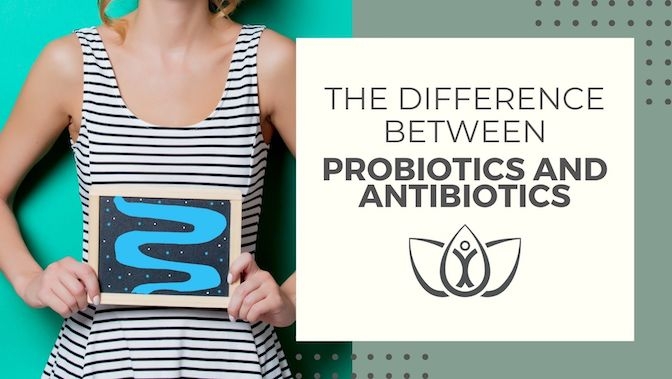The following article was originally published in Health Keepers, a magazine created by Trinity's founder, Dr. Wendell Whitman. This article appeared in Volume 31• pg 30, August 2012. This article originally titled, "What's the Difference Between Probiotics and Antibiotics?" was written by Lynn Morales, ND.
Many people don’t understand and misuse the terms antibiotic and probiotic. These terms often appear in print, online, and in commercial advertising without providing accurate definitions of either. Although the words look similar, they are very different concepts. Broken down, the words have three distinct parts, but there is much more to their definitions than just the meanings of these three components.
Anti– meaning "against." Antibiotics are drugs that are used to treat bacterial infections. Most antibiotics are derived from bacteria or molds and either kill the intended bacterial target or stop them from reproducing. This allows the body’s natural immune defenses to take over and remove them from the body. However, it is important to realize that one antibiotic does not treat all types of bacterial infections. For this reason, doctors and veterinarians prescribe a specific antibiotic for a particular kind of bacterial infection. This means that penicillin is not a magical cure-all. More often, your physician will prescribe a different antibiotic. Most importantly, when prescribed an antibiotic, make sure to follow their directions, i.e., continue to take the full dosage, even if you see signs of improvement. If the dosage directions are not followed, the antibiotics will not be in the system for enough time to make a full recovery, and, most often, a relapse infection will occur.
Pro- meaning "for." Probiotics, by definition, are organisms that contribute to the overall health of the digestive tract. Sometimes you will hear people refer to probiotics as friendly, beneficial, or good bacteria, which is an easy way to remember the difference between these bacteria and the bacteria that cause diseases and infections. Naturally, all organisms have probiotics in their digestive systems, most of which line the walls of the digestive system. Newborns get their first probiotics from their mother’s milk. To improve the amount of beneficial bacteria in one’s digestive system, there is a wide array of products available on the market for both human and animal use. A good example of a widely used probiotic is Lactobacillus acidophilus, which is most commonly found in yogurt, but now can be found in many supplements. Many other strains of bacteria are probiotics, and specific probiotics have different uses and benefits. That’s why you may see multiple types of bacteria in a probiotic product. Using probiotic supplements is a great idea because they can be used to administer a large number of beneficial bacteria, which can then effectively colonize the digestive system. In addition, probiotics promote the integrity of the digestive tract lining, which helps prevent bad bacteria and other foreign invaders from entering.
Biotic– meaning "having to do with life or living organisms."
Prebiotics are non-digestible carbohydrates that act as food for probiotics. When probiotics and prebiotics are combined, they form a synbiotic. For example, fermented dairy products, such as yogurt and kefir, are considered synbiotic because they contain live bacteria and the fuel they need to thrive.
Probiotics are found in foods such as yogurt, while prebiotics are found in whole grains, bananas, onions, garlic, honey, and artichokes. In addition, probiotics and prebiotics are added to some foods and are available as dietary supplements.
Although more research is needed, there's encouraging evidence that probiotics may help reduce the symptoms or occurrence of:
· Diarrhea, especially following treatment with certain antibiotics
· Vaginal yeast and urinary tract infections
· Irritable bowel syndrome
· Certain intestinal infections
· Eczema in children
· Colds and flu
Side effects are rare, and most healthy adults can safely add foods that contain prebiotics and probiotics to their diet.
Can you use both probiotics with antibiotics? When looking at these definitions, it may appear that antibiotics work against probiotics, but most times, this is not exactly the case. If you remember, most antibiotics treat specific bacteria or bacterial infections. Taking an antibiotic will not kill all the bacteria in a digestive system, but it will kill a portion of the beneficial gut flora. However, one common problem associated with taking an antibiotic is antibiotic-associated diarrhea, which may occur in both humans and animals taking antibiotics. This is why using a probiotic in combination with taking an antibiotic is especially beneficial because taking probiotics can help prevent antibiotic-associated diarrhea and other related antibiotic health issues. To help keep everyone healthy, humans and animals alike, find a probiotic and keep it handy for use with antibiotics. Better yet, start a daily probiotic regimen for enhanced results.
References:
http://www.probioticsmart.com/blog/probiotic-vs-antibiotic
http://www.mayoclinic.com/health/probiotics/ AN00389
https://www.ncbi.nlm.nih.gov/pmc/articles/PMC4425030/
NOTE: This article was edited to adhere to current legal and practical standards.


